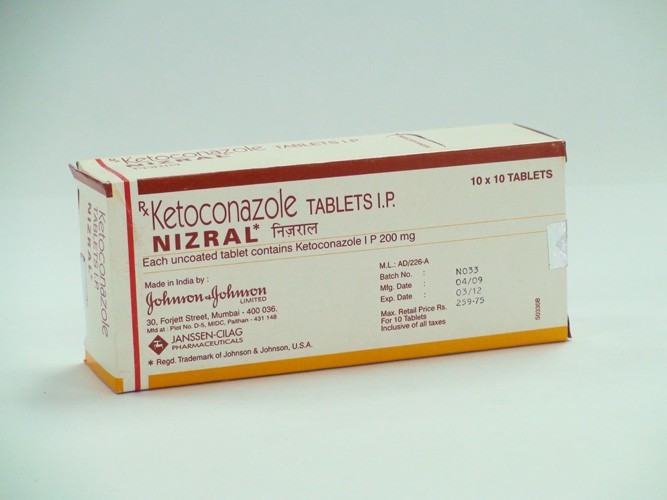

The liver biopsy showed cirrhosis, but the report does not mention evidence of biliary damage as might be seen in vanishing bile duct syndrome or primary biliary cirrhosis or sclerosing cholangitis. Laboratory values remained abnormal even five years after the initial presentation and discontinuation of ketoconazole. However, the evidence of liver injury persisted and four months later clinical evidence of cirrhosis was present. The initial presentation with acute, severe hepatocellular jaundice arising 5 months after starting ketoconazole in a middle aged woman was typical of this form of drug induced liver injury. During long term follow up, liver tests improved, but remained abnormal even five years after the acute injury and discontinuation of ketoconazole.Īn unusual case of drug induced liver injury. Liver biopsy showed cirrhosis bile duct damage was not mentioned. Ascites was found after 4 months and upper endoscopy showed varices. Over the next four months bilirubin levels remained high and serum albumin fell. Tests for viral hepatitis A, B, C and E were negative as were autoantibodies including ANA and AMA. Serum bilirubin was 12.8 mg/dL and ALT 1461 U/L. On presentation, she had jaundice but no fever or rash. Before starting therapy, serum aminotransferase and bilirubin levels were normal. Ketoconazole induced liver cirrhosis.Ī 41 year old woman developed nausea, vomiting, anorexia, and jaundice after taking ketoconazole (200 mg daily) for 4.5 months for onychomycosis. Nevertheless, other azoles should be started with caution in patients who have suffered clinically apparent hepatotoxicity attributed to ketoconazole.Ĭase 3. There is little information on cross reactivity of hepatic injury between ketoconazole and other antifungal azoles, such as itraconazole, fluconazole, voriconazole and posaconazole, but a few reports suggest that there is little cross reactivity. Rechallenge leads to recurrence and should be avoided. At least one case of chronic hepatitis and cirrhosis has been linked to ketoconazole therapy (Case 3).
#Ketoconazole xteam 60 full
Recovery from ketoconazole hepatitis is typically slow, starting 1 to 4 weeks after stopping the medication and requiring 1 to 3 months for full recovery. The severity of the liver injury from ketoconazole ranges from mild and transient enzyme elevations (Case 1) to symptomatic acute liver injury with jaundice (Case 2), to severe hepatitis and acute liver failure (Case 4), resulting in death or need for emergency liver transplantation. Severe adverse events include anaphylaxis, hepatotoxicity, endocrine dysregulation and prolongation of the QTc interval. Common side effects include pruritus, nausea, rash, abdominal pain, headache, dizziness, fatigue, impotence, menstrual abnormalities and gynecomastia. Ketoconazole is also available as a cream, solution and shampoo for cutaneous fungal infections. The dose used for prostate cancer is 400 mg three times daily. The recommended dose for fungal infections is 200 to 400 mg once daily by mouth in adults and 3.3 to 6.6 mg/kg in children older than 2 years of age. Ketoconazole is available as 200 mg tablets in several generic forms and previously under the brand name of Nizoral. Current indications include systemic fungal infections due to candida, blastomycosis, coccidiomycosis, histoplasmosis, chromomycosis and paracoccidioidomycosis. Because of its potential for severe adverse reactions including hepatotoxicity, ketoconazole has been withdrawn in many countries and has strict labeling in the United States recommending that it be used only when other effective antifungal agents are not available or tolerated. Ketoconazole was approved for use in the United States in 1981, but has been replaced by other antifungal agents which have fewer side effects and wider range of activity. Ketaconazole has also been used as adjuvant therapy of prostate cancer, because of its effects in lowering androgen production by both the testes and adrenal glands. Ketoconazole has been used in the treatment of many fungal infections including blastomycosis, candidiasis, coccidiomycosis, tinea pityriasis versicolor and histoplasmosis. Ketoconazole may also inhibit fungal triglyceride and phospholipid synthesis and fungal oxidative and peroxidative enzyme activity, causing accumulation of hydrogen peroxide, contributing to deterioration of organelles. Ketoconazole (kee" toe kon' a zole) is an imidazole derivative and fungicidal agent which is believed to work by several mechanisms, including inhibition of the fungal 14α-ergosterol demethylase which is responsible for converting lanosterol to ergosterol and which blocks fungal cell membrane synthesis.


 0 kommentar(er)
0 kommentar(er)
